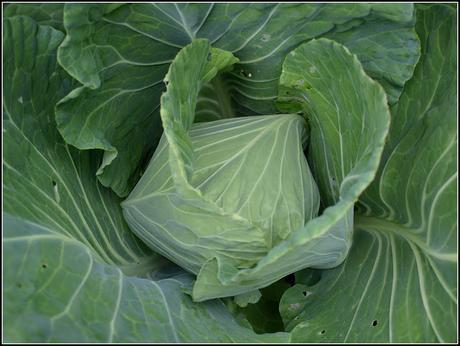
Cabbage "Gunma"
I have grown cabbages many times before, and they have been OK-ish, but nothing to write home about. This year I was determined to do better. I added to the raised bed not only some of my own home-made compost, but also some pelleted chicken manure (which is very high in Nitrogen, which leafy brassicas need), and perhaps most significantly some Seer Rockdust. The rockdust is alleged to improve vegetable growth dramatically by adding to the soil all the minerals that plants need, but which are often lacking or depleted in normal garden soil. Well, I think it really has worked for me. Certainly some of the cabbages I planted are enormous.The trouble is that with all the cabbages getting so big their bed has become overcrowded. One of them bolted prematurely (appropriately enough it was one of the "Greyhound" ones!) and its sibling looks as if it is on the verge of bolting too:

Cabbage "Greyhound". I think this one may be about to bolt.
I decided that some thinning was necessary. I therefore removed the bolter, and harvested somewhat prematurely one of the two "Cabbice" plants. I know it would have got bigger if given more time, but I felt that it had to come up in order to give the others a better chance. This is it: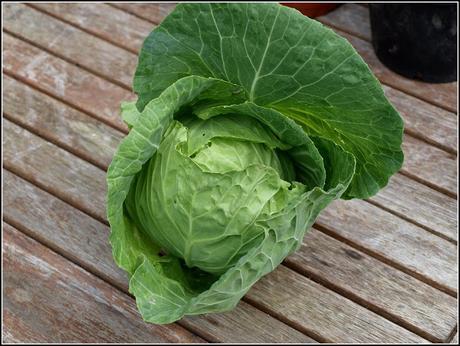
Cabbage "Cabbice"
Here it is being prepared for cooking. It was a nice cabbage.
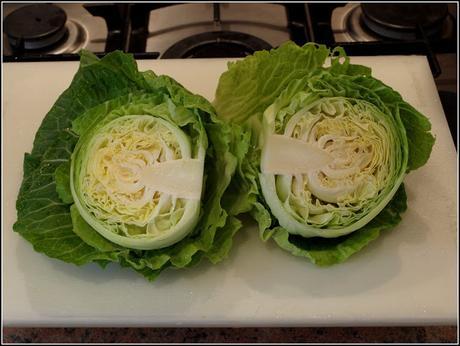
The same cabbage, in the kitchen.
While I was thinning the bed, I took the opportunity to have a good tidy-up. I removed all the dead and yellowing leaves from all the plants, and also the cardboard collars which had outlived their usefulness. The most important task though was to rescue the two huge "January Kings", which were toppling over. One of them had produced a very long stalk, which obviously made stability a bit of an issue. I drove a short but stout wooden stake into the ground near each cabbage, and tied the plants to them with several turns of soft string:
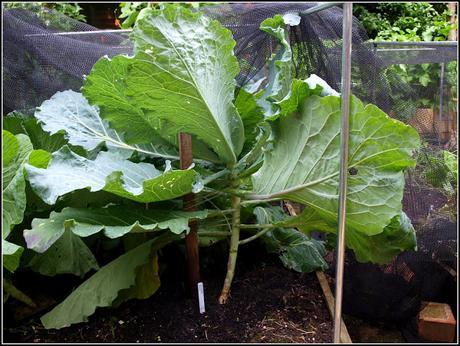
Cabbage "January King", now supported by a stake.
This is the same plant seen from above. Although it's only just beginning to form a heart, the outer leaves are enormous.
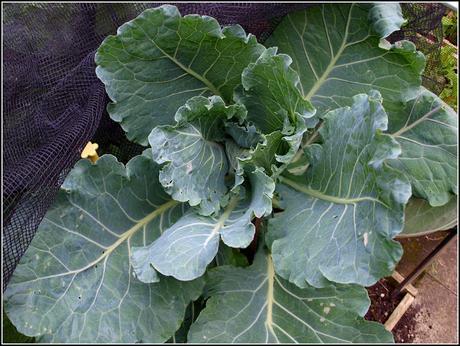
You remember the 3 Brussels Sprouts I mentioned? Well, one of them had been completely submerged by cabbage leaves, and was looking very pale and thin. I don't think it will come to anything. The other two, though somewhat drawn by having to struggle up towards the light through a crowd of cabbages, don't look too bad. Here's one of them:
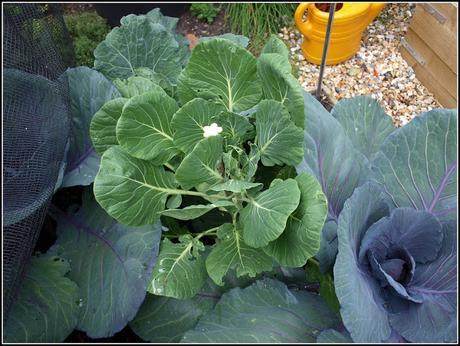
As you can see, that one has a red cabbage either side of it. They are "Ruby Perfection", and are nearly as big as the "January King". They also are just beginning to form hearts.

Cabbage "Ruby Perfection"
The two "Golden Acre" cabbages are very small in comparison with the others, and I rather suspect they will bolt just like the "Greyhounds". They have just been outclassed by the bigger varieties. Survival of the fittest in action!
Both "Gunma" and "Cabbice" are varieties grown from seed kindly provided FOC for me to review by Marshalls. I have to say, completely honestly, that these are two of the best cabbages I have ever encountered. I haven't yet harvested either of the "Gunma" ones, but I have had a feel of their hearts, which are already solid and weighty, although I'm sure they will get much bigger yet.
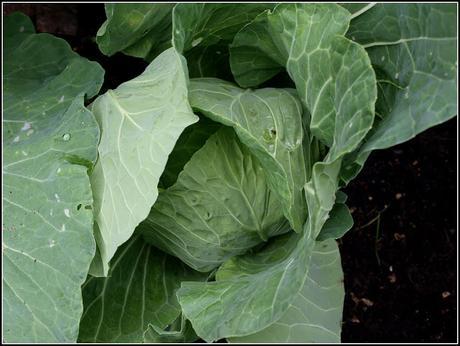
Cabbage "Cabbice"
Luckily there have been very few Cabbage White butterflies about this year, so caterpillars have not been a problem. More surprisingly, in what has been dubbed The Year of The Slug, my brassicas have also suffered little from slug / snail attack. I know that some people will be critical of this, but I use the little blue slug-pellets (as sparingly as I dare), and they do seem to be effective. Other strategies like beer-traps, crushed eggshells and copper tape are mostly fairly ineffectual.
